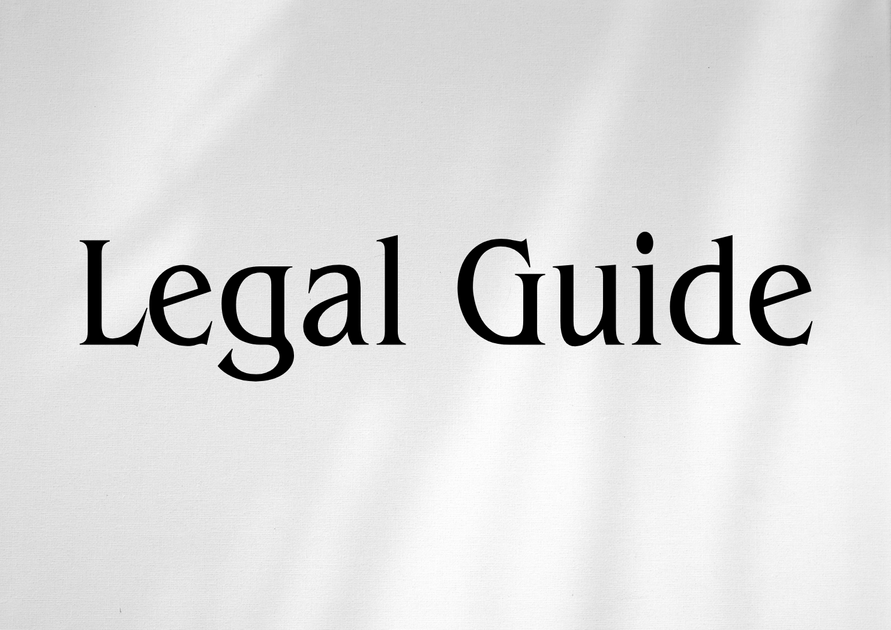Introduction
In recent years, the United Arab Emirates (UAE) has demonstrated a proactive approach to emergency and crisis management, reflecting its position as a global hub for commerce, tourism, and innovation. With rapid development, a diverse expatriate workforce, and increasing integration into international markets, the need for robust emergency and crisis management frameworks has never been more pronounced. The UAE government continues to elevate the legislative landscape concerning emergency preparedness, underscoring the paramount importance of legal compliance for businesses, institutions, and government entities alike.
Following significant policy responses to global challenges—including the COVID-19 pandemic, geopolitical uncertainties, and climate-related risks—the UAE has enacted updated regulations and guidelines requiring all organizations to implement comprehensive emergency and crisis management plans (ECMPs). These obligations rest not only on public-sector entities but increasingly extend to private sector enterprises, educational institutions, and even complex facilities such as shopping malls and critical infrastructure projects.
This article delivers a consultancy-grade analysis of the UAE’s legal obligations relating to emergency and crisis management. It provides legal practitioners, executives, HR leaders, and compliance officers with authoritative guidance on current requirements, the evolution of the legal regime, practical implementation, and the consequences of non-compliance. Our analysis draws on official sources such as the UAE Ministry of Justice, the Ministry of Human Resources and Emiratisation (MOHRE), and the Federal Legal Gazette to ensure the utmost accuracy and relevance.
As the UAE prepares for an increasingly complex risk environment in 2025 and beyond, understanding and effectively applying these legal provisions is essential for operational resilience and reputational protection.
Table of Contents
- Context and Legal Framework: UAE Emergency Management
- Key UAE Laws and Decrees Relating to Emergency & Crisis Management
- Organizational Obligations Under UAE Law
- Comparison of Old and New UAE Legal Requirements
- Risk, Case Studies, and Penalties for Non-Compliance
- Implementing Compliant Emergency Management Plans
- Conclusion and Forward-Looking Perspectives
Context and Legal Framework: UAE Emergency Management
Strategic Importance of Emergency Management in the UAE
The UAE’s multi-sector growth and globalized activities have necessitated a strong legal response to evolving risks, ensuring business continuity and societal safety. The federal government’s approach places emphasis both on operational readiness for emergencies—periods of sudden, disruptive impact (such as natural disasters, pandemics, or terror threats)—and on crisis management, which encompasses dealing with and recovering from such events.
Comprehensive legal frameworks have been progressively implemented to create standardized expectations and requirements for all businesses, regardless of size or sector. These frameworks address risk identification, prevention strategies, crisis communication protocols, and rapid response measures.
UAE Government Agencies and Oversight
Oversight of emergency and crisis management falls under several key agencies:
- National Emergency Crisis and Disaster Management Authority (NCEMA): The lead federal authority for devising and enforcing national policy, plans, and response frameworks.
- Ministry of Interior: Responsible for civil defense, public safety, and emergency law enforcement operations.
- Ministry of Human Resources and Emiratisation (MOHRE): Mandates employer responsibilities regarding employee safety and workplace emergency compliance.
The NCEMA’s National Emergency Plan forms the backbone of the UAE’s system. Meanwhile, Cabinet Resolutions and Ministerial Guidelines set sector-specific requirements, while Emirate-level authorities (e.g., Dubai Civil Defence) enforce regulations locally.
Key UAE Laws and Decrees Relating to Emergency & Crisis Management
Federal Law No. 2 of 2011 on the Establishment of the NCEMA
This Federal Law established the NCEMA as the principal coordinating body on emergencies, disasters, and crises. It empowers the NCEMA to develop, oversee, and enforce risk management frameworks across federal and local government entities as well as the private sector. Key provisions include:
- Development and mandatory periodic review of ECMPs for all government and critical private entities
- Standardization of risk assessment, emergency response, and recovery procedures
- Empowering the NCEMA to inspect and audit compliance
Cabinet Resolution No. 41 of 2020 on Emergency and Crisis Management Provisions
Issued in direct response to global shifts in risk, this landmark resolution stipulates concrete requirements for organizations operating in the UAE, such as:
- Compulsory formulation and registration of ECMPs with relevant authorities
- Designation of internal “Crisis Management Teams”
- Regular drills, periodic staff training, and annual plan reviews
- Integration with national and Emirate-specific notification and response systems
Ministerial Decision No. 675 of 2022 (MOHRE): Occupational Health and Safety in the Workplace
This Decision focuses on workplace safety, mandating that all employers, regardless of sector, must establish and maintain ECMPs addressing fire, medical, and environmental emergencies. Employers are further required to:
- Train employees on emergency protocols
- Ensure periodic evacuation drills
- Provide necessary safety equipment
Other Key Legal Instruments
- Federal Law No. 5 of 2012 (Cyber Crimes Law) – Includes provision for cyber crisis response.
- UAE Civil Defence Law and Regulations – Detailed building and fire safety compliance, particularly for property owners.
Official References
National Emergency Crisis and Disaster Management Authority (NCEMA)
Ministry of Human Resources and Emiratisation (MOHRE)
Ministry of Justice
UAE Government Portal
Organizational Obligations Under UAE Law
Which Entities Are Bound?
Legal obligations relating to emergency and crisis management plans apply broadly. Entities specifically required to comply include:
- All federal and local government departments
- Critical infrastructure operators (utilities, telecom, transport, healthcare, energy)
- Large commercial organizations and employers (per Cabinet Resolution No. 41 of 2020)
- Educational institutions
- Shopping malls and hospitality venues
Recent law updates clarify that even SMEs may be subject to certain requirements, particularly in high-density, public-facing sectors.
Mandatory Provisions for ECMPs
Under UAE legal framework, a compliant Emergency and Crisis Management Plan must include:
- Risk Assessment: Identification of potential emergencies (natural disaster, pandemic, fire, violent threats, cyber incident)
- Resource Allocation: Inventory of available emergency resources (personnel, equipment, protocols)
- Chain of Command: Clear definition of roles and internal “crisis management team” assignments
- Communication Strategy: Protocols for internal notification, external media communications, and coordination with authorities
- Evacuation & Shelter-in-Place Procedures: Clear, accessible protocols for staff and visitors
- Training & Drills: Annual (or more frequent) exercises, records of training, and ongoing staff education
- Review & Continuous Improvement: Annual plan review, incident investigation, and plan adaptation based on changing risks
Practical Application
For example, a multinational headquartered in Abu Dhabi, operating both corporate offices and manufacturing facilities, must create separate, contextually tailored ECMPs for each physical location. Each plan should account for unique local risks, such as hazardous materials handling or high-rise evacuation logistics, and must be aligned with federal frameworks and the NCEMA’s guidance.
Comparison of Old and New UAE Legal Requirements
The evolution of UAE’s legislation has sharply elevated compliance standards for emergency and crisis management. The following table outlines the key differences:
| Aspect | Pre-2020 Regime | Current Law (Post-2020/2022 Updates) |
|---|---|---|
| Scope | Primarily govt. & critical infrastructure | Broader, including private sector, SMEs, education, malls |
| Plan Registration | Internal documentation usually sufficient | Mandatory registration with NCEMA/local authorities |
| Training & Drills | Ad hoc; not always enforced | Annual (or periodic) training and documented drills required |
| Penalties | Warnings, low-level fines | Substantial fines, possible administrative closure, public naming |
| Inspections | Occasional inspections | Routine, unannounced compliance audits |
| Executive Liability | Rarely applied | Executive/managerial liability for non-compliance |
Suggestion: A compliance checklist diagram, visually displaying the essential ECMP elements and review procedures, can enhance clarity for business decision-makers.
Risk, Case Studies, and Penalties for Non-Compliance
Real-World Consequences
Non-compliance is no longer a mere formality—recent enforcement actions reveal a strict stance against organizations failing in their ECMP obligations. Penalties can include:
- Substantial fines (ranging from AED 50,000 to AED 500,000 for major breaches – Cabinet Resolution No. 41/2020, Art. 12)
- Temporary or permanent closure of premises
- Manager/executive personal liability, including restriction from holding office
- Public naming and reputational damage
Case Study: Hospitality Sector Emergency Management
Consider a Dubai-based hotel chain that failed to conduct the required annual fire evacuation drills and did not register its ECMP with local authorities. During a minor incident, confusion among employees resulted in delayed guest evacuations and minor injuries. Subsequent inspection led to a temporary closure, a fine of AED 200,000, and mandatory public disclosure of the incident.
Case Study: Manufacturing Facility Pandemic Response
An industrial facility in Sharjah was cited for failing to update its ECMP to account for pandemic risks in 2021–22. The lack of a clear isolation protocol and communication strategy resulted in a virus outbreak, triggering productivity loss, negative public coverage, and regulatory scrutiny. The company was required to overhaul its risk assessment and training, facing a substantial financial and reputational cost.
Summary Table: Penalties Under UAE Law
| Offense | Potential Penalty | Legal Source |
|---|---|---|
| Failure to register ECMP | AED 50,000–150,000 | Cabinet Resolution No. 41/2020, Art. 12 |
| No annual drills/training | AED 10,000–100,000 | Ministerial Decision No. 675/2022 |
| Breach causing injury or loss | AED 100,000–500,000 + closure | Cabinet Resolutions, Civil Defence Regs |
| Executive negligence | Liability, employment restrictions | Cabinet Resolution No. 41, Art. 15 |
Suggestion: A risk heatmap visualizing compliance threats versus penalties would reinforce awareness for risk and compliance personnel.
Implementing Compliant Emergency Management Plans
Step-by-Step Consultancy Recommendations
- Gap Analysis: Conduct a comprehensive review of existing risk assessment and crisis response protocols versus the latest legal standards.
- Appoint a Crisis Management Team: Assign explicit roles and responsibilities, ensuring direct reporting lines to senior management.
- Engage External Legal and Technical Experts: Work with legal consultants, fire safety specialists, IT/cyber consultants, and occupational health advisors to align plans with both statutory and technical best practices.
- Risk Mapping: Use the NCEMA’s publicly available risk templates to identify all probable emergency scenarios specific to your organizational activities and locations.
- Develop Plan Content: Integrate requirements for emergency communications, evacuation/shelter protocols, documented contact lists, and resource deployment procedures.
- Training and Drills: Design regular (at least annual) emergency drills and ensure training for all staff, logging attendance and learning outcomes for compliance reporting.
- Formal Registration: Submit your ECMP to the relevant authority—NCEMA, local Civil Defence, or MOHRE—using their approved digital platforms, ensuring all statutory forms are fully completed.
- Continuous Improvement: Following any incident or drill, conduct a post-incident review and update your ECMP accordingly. Ensure annual Board/leadership reviews and sign-offs.
Best Practice: Compliance Calendar and Integrative Technology
Establishing a compliance calendar—integrating digital reminders for training, reviews, and drills—helps reinforce institutional discipline. Many UAE-based organizations now utilize crisis management software and employee safety apps to streamline compliance documentation and response times.
Consultancy Insight: Tailoring for Industry and Scale
Legal requirements should be adapted based on your industry, facility size, and exposure to unique risks. For instance:
- Healthcare facilities must emphasize communicable disease protocols and hazardous materials containment
- Educational institutions may focus on student evacuation procedures and crisis communications with parents
- Retail centers require clear public communication plans and coordination with mall security
Sample Compliance Checklist Table
| Requirement | Status (Yes/No) | Comments/Deadline |
|---|---|---|
| Risk Assessment Performed | ||
| Crisis Team Appointed | ||
| ECMP Documented & Registered | ||
| Annual Training Conducted | ||
| Evacuation Drills Completed | ||
| Latest Plan Review Date | ||
| Post-Incident Review Updated |
Conclusion and Forward-Looking Perspectives
The UAE’s commitment to world-class emergency and crisis management continues to set the standard for legal preparedness in the region. Through Federal Law, Cabinet Resolutions, and ministerial enforcement, the legal regime requires all public and private organizations to take a proactive and systemic approach to risk mitigation and crisis recovery.
Key legal updates—especially those introduced since 2020—have meaningfully raised the bar for compliance, accountability, and executive liability. Organizations that fail to adhere risk not only regulatory penalties, but also tangible financial, reputational, and operational harm.
Looking forward, as the risk landscape evolves with technological progress, population growth, and global interconnectedness, UAE organizations must maintain a culture of compliance and regular review. The best practice is not merely to “tick the box” but to integrate robust emergency management as a core element of leadership and corporate strategy. Engaging expert legal consultants to periodically review and update your ECMP is essential for resilience and long-term value protection.
Proactive compliance with UAE’s emergency and crisis management regulations is an investment in business continuity, employee safety, and public trust. Proper understanding, diligent application, and ongoing improvement of emergency protocols remain critical for every organization’s legal and operational future.




